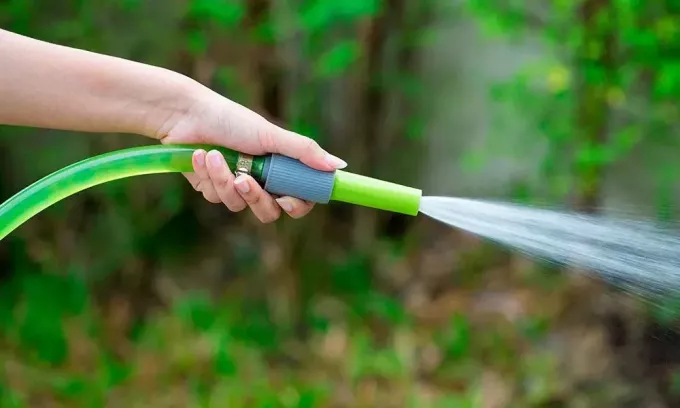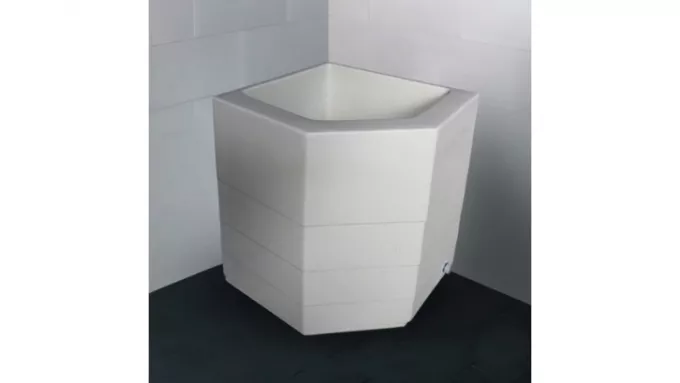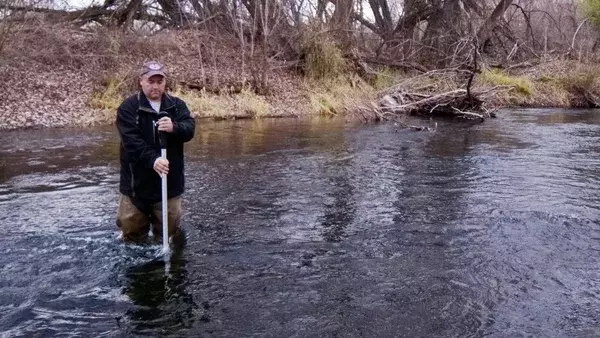Water Discharge Formula and How to Calculate It (Example)
Loading...
When filling water, whether in a bath or a fish pond, have you ever thought like, why does it take so long for the water to fill up even though you've been waiting a long time? To answer this question, you must first understand the formula for water discharge and how to use it.
In physics, there are two methods of calculating water discharge, namely manually or using advanced technology. However, on a small scale, it is certainly much more efficient to discharge water manually. Moreover, this method is also quite practical and certainly easy to learn.
List of contents
Definition of Water Discharge

Water discharge is the flow rate of liquid in per unit time. Systematically, discharge is denoted by a symbol. From this, it can be concluded that the discharge is influenced by the volume of the liquid and the time it takes for the substance to flow.
Generally, the unit of discharge is used to monitor the capacity or capacity of water in rivers and dams so that the volume can be controlled. Not only that, calculating debit also provides various benefits, including the following:
- Calculate the flow of river water.
- Calculating rainfall.
- Calculate how long it will take to fill the water reservoir.
- Calculate the amount of water used for activities.
Read: Physics Change
Water Discharge Formula
In calculating the water discharge, you can use the following formula:
Q = v
t
Information:
Water Discharge (Q): Liter/second, liter/hour, cm3/minute, and m3/hour
Volume (V): Liters, cm3, dm3, and m3
Time (t): Hours, minutes and seconds
V = Volume
T = Time
Meanwhile, to calculate the flow time, you can continue the formula below:
t = V
Q
After finding the discharge and the time of the water flow, it is time to calculate the volume of the flow with the following formula:
V = Q x t
Calculating Water Discharge in Pipes

The variable components that can be used to calculate the water discharge in the pipe are volume, time, cross-sectional area, and velocity. Below are examples of more real questions:
A pipe drains 12 liters of water in one minute. So, how much water discharge comes out of the pipe?
Solution:
V = 15 Liters
t = 1 Minute = 60 Seconds
Asked: Q……….?
Discussion:
Q = V/t = 15/60 = 0.25 liter/second
So, it is known that the water discharge coming out of the pipe is 0.25 liters/second.
Read: Hydrostatic Pressure
Formula for Calculating Irrigation Water Discharge
To calculate water in irrigation, the mainstay water discharge formula is used, namely the maximum discharge that can be accommodated in irrigation. So that the water source used can be optimized.
The formula for calculating the mainstay water discharge is as follows:
Q = A X V
or
Flow Discharge = Cross-sectional Area x Flow Velocity
The units commonly used are:
Flow rate (m3/s), cross-sectional area (m2), as well as flow velocity (m/s)
Examples of Water Discharge Questions
Learning the formula for finding water discharge without being followed by the practice of working on direct questions certainly feels futile. Therefore, to facilitate learning activities and memorizing formulas for calculating water discharge, you can use the following questions as material for practice:

Problem 1
Mr. Tomo has a bathtub with a volume of 0.60 m3. While the water faucet in the bathtub has a water discharge of 10 liters / minute. Then, how many minutes does it take Mr. Tomo to fill the tub to the brim?
Discussion:
Bath Volume = 0.60 m3
1 m3 equal to 1000 liters, so the volume of the tank becomes:
Bath Volume = 0.60 x 1000 = 600 liters
The volume of the bath is equal to the volume of water that will enter the bath.
Water Discharge (Q) = 10 liters/minute
Advertisement
t = V
Q
t = 600
10
t = 60 minutes
So, the time it takes Mr. Tomo to fill the tub to the brim is 50 minutes.
To make it clearer, you can also practice with the following questions:

Problem 2
If it is known that the flow of water flowing through a hose is 1.3 m3/detik. How many cubic meters of water will flow through the hose in 60 seconds?
Discussion:
Discharge (Q) = 1.3 m3/detik
Time (t) = 60 seconds
v = Q x t
v = 1.3 m3 x 60
v = 78 m3
So, the volume of water flowing through the hose is 78 m3/60 seconds.
Still don't understand? Let's move on to the next question:

Problem 3
A bathtub with a size of 50 cm x 50 cm x 100 cm. If the tub can be fully filled in 40 minutes. Calculate the water discharge in minutes/liter?
Discussion:
The volume of the bath = 50 cm x 50 cm x 100 cm
The volume of the bath = 250,000 cm3
1 cm3 = 0.001 liter
Then, the volume of the bathroom tub becomes:
= 250,000 x 0.001 = 250 liters
The volume of the bath = The volume of water in the bath
t = 40 minutes
Q = v
t
Q = 250
40
Q = 6.25 liters/minute
So, the water flow required to fill the bathtub to the brim is 6.25 liters/minute.
Read: Liquid
Discharge Measurement with Floating Device

One method of measuring water discharge that is commonly used is the Float Area. In the process, of course, involves the use of floats. This method has several principles in measuring water discharge, including the following:
- River discharge (Q) = A x V / A = A x K (Constant).
- The cross-sectional area (A) is determined based on the measurement of the unit width or L and the channel depth or D.
- The water flow velocity (V) refers to the float velocity or U.
Information:
Q = discharge (m3/detik)
A = Wet cross-sectional area (m2)
U = float speed (m/sec)
K = coefficient of buoy
Flow Velocity Measurement with 'Flow Proble' or 'Current-meter'

Measuring the speed of water flow can also be done using the Flow Proble method by using a current meter. The application of this method is based on several principles, namely as follows:
- The speed of water is measured with a device called a current meter.
- The wet cross-sectional area is determined based on the measurement of the width of the water surface and the depth of the water. Meanwhile, the depth can be measured using a ruler, rope, or cable.
How to measure flow velocity with Flow Proble method:
Vb is measured 0.3 m from the bottom of the river
Vs measured 0.3 m from the water surface area
The flow speed is calculated based on the number of propeller revolutions per rotation time or N = revolutions/second. Meanwhile, the flow velocity or V – aN + b (a and b are the calibration values of the current meter). The amount of time and rotation of the propeller is done with a stopwatch.
If you have a dream to become a civil engineer or water resource engineer, then you must understand the formula for water discharge. So that it can solve problems related to fluid flow velocity based on a reference per unit time accurately.
X CLOSE
Advertisements
ADVERTISEMENT
X CLOSE
